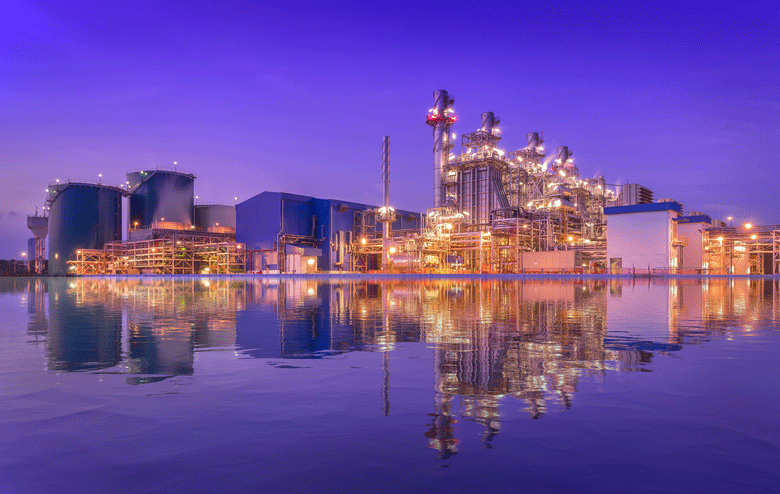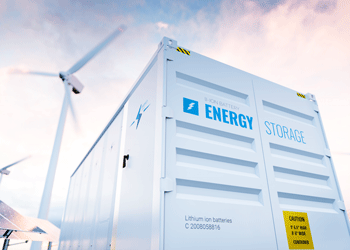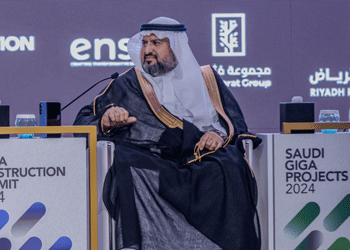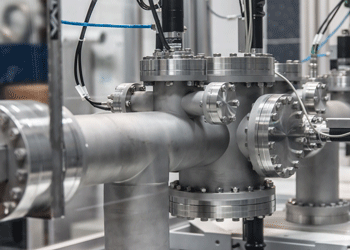More firms join race to build world’s tallest tower
11 October 2023

Register for MEED’s guest programme
More firms have approached Jeddah Economic Company (JEC) to take part in the tender for the contract to complete the world’s tallest tower, the 1,000-metre-plus-tall Jeddah Tower project in Saudi Arabia.
According to a source close to the project, a range of local and international firms have approached the developer about working on the project.
Two of the best-known international names that have come forward are South Korea’s Daewoo and Egypt’s Orascom Construction. Orascom is a 50 per cent shareholder in Belgium’s Besix Group, which was part of the three-way joint venture that built the 828-metre-tall Burj Khalifa in Dubai.
Besix has shown appetite for working on other record-breaking tower projects in recent years. It completed the raft foundation for the tallest tower project at Dubai Creek Harbour and participated in the tender – which was ultimately cancelled – to build the tower’s superstructure as part of a joint venture with Tishman, which US-based Aecom owns.
The Burj Khalifa joint venture also comprised South Korea’s Samsung C&T. MEED exclusively reported in September that Samsung C&T was one of 14 companies that had been invited to complete Jeddah Tower. The other firms are:
- Almabani (local)
- Bawani (local)
- China Harbour (China)
- China State Construction Engineering Corporation (China)
- Consolidated Contractors Company (CCC – Lebanon)
- El-Seif Engineering Contracting (local)
- Hyundai Engineering Construction (South Korea)
- Mohammed Abdulmohsin al-Kharafi & Sons (Kuwait)
- Nesma & Partners (local)
- Powerchina (China)
- Saudi Freyssinet (local)
- Skanska (Sweden)
- Strabag (Europe)
These firms are forming joint ventures, according to the source close to the project. The source expects the joint ventures to comprise international, regional and local partners.
 Vision 2030 drives tall tower plans
Vision 2030 drives tall tower plans
The construction work for the tower’s superstructure, which began in the early 2010s with the local Saudi Binladin Group (SBG) as the contractor, is one-third complete. The foundations and piling work for the record-breaking tower are finished. Germany’s Bauer completed the piling work for the building.
JEC commissioned an independent assessment of the structure before the tender was issued.
While SBG is no longer working as the contractor on the project, the consultancy team remains the same. The architect is US-based Adrian Smith & Gordon Gill, and the project manager is Lebanon’s Dar al-Handasah (Shair & Partners).
 Jeddah Tower restart is a watershed moment
Jeddah Tower restart is a watershed moment
The shareholders in JEC are Kingdom Holding Company with a 40 per cent stake, Bakhsh Group with a 40 per cent stake, and Sharbatly Group with a 20 per cent share.
Jeddah Tower will be taller than Dubai’s Burj Khalifa by more than 172 metres. It is the centrepiece of the Jeddah Economic City development. The project’s first phase, which includes the main tower, covers an area of 1.5 square kilometres.
Read the October edition of MEED Business Review

| Saudi growth dips while project activity soars |
Oil production cuts trim public sector growth, but private sector thrives

*=Year-to-date | Sources: IMF, MEED Projects, MEED
MEED’s October 2023 special report on Saudi Arabia includes:
 > COMMENT: Riyadh reshapes its global role
> COMMENT: Riyadh reshapes its global role
> POLITICS: Saudi Arabia looks both east and west
> SPORT: Saudi Arabia’s football vision goes global
> ECONOMY: Riyadh prioritises stability over headline growth
> BANKS: Saudi banks track more modest growth path
> UPSTREAM: Aramco focuses on upstream capacity building
> DOWNSTREAM: Saudi chemical and downstream projects in motion
> POWER: Riyadh rides power projects surge
> WATER: Saudi water projects momentum holds steady
> GIGAPROJECTS: Gigaproject activity enters full swing
> TRANSPORT: Infrastructure projects support Riyadh’s logistics ambitions
> JEDDAH TOWER: Jeddah developer restarts world’s tallest tower

Exclusive from Meed
-
 Sumitomo team submits Facility E bid
Sumitomo team submits Facility E bid25 July 2024
-
 Iraq drives Gulf projects market growth
Iraq drives Gulf projects market growth25 July 2024
-
 Abu Dhabi tenders 400MW battery storage contract
Abu Dhabi tenders 400MW battery storage contract25 July 2024
-
 Transforming Riyadh into a world-class city
Transforming Riyadh into a world-class city25 July 2024
-
 WTTCO tenders water pipeline and reservoir packages
WTTCO tenders water pipeline and reservoir packages25 July 2024
All of this is only 1% of what MEED.com has to offer
Subscribe now and unlock all the 153,671 articles on MEED.com
- All the latest news, data, and market intelligence across MENA at your fingerprints
- First-hand updates and inside information on projects, clients and competitors that matter to you
- 20 years' archive of information, data, and news for you to access at your convenience
- Strategize to succeed and minimise risks with timely analysis of current and future market trends

Related Articles
-
 Sumitomo team submits Facility E bid
Sumitomo team submits Facility E bid25 July 2024
A team led by Japan's Sumitomo Corporation submitted a bid for the contract to develop and operate Qatar’s Facility E independent water and power producer (IWPP) project.
Qatar state utility General Electricity & Water Corporation (Kahramaa) previously extended the tender closing date for the contract in response to developers’ requests, as MEED reported.
Kahramaa received the single bid on 25 July.
Sumitomo is understood to have submitted a proposal for the contract along with fellow Japanese utility developer Shikoku Electric, and Seoul-headquartered Korea Overseas Infrastructure & Urban Development Corporation and Korea Southern Power Company.
The developer consortium's engineering, procurement and consortium (EPC) partner is South Korea's Samsung C&T, according to sources close to the project.
The Facility E IWPP scheme will have a power generation capacity of 2,300MW and a water desalination capacity of 100 million imperial gallons a day (MIGD).
The contract to develop the Facility E IWPP was first tendered in 2019. The three teams that submitted bids for the contract in August 2020 were:
- Engie (France) / Mitsui (Japan) / Yonden (Shikoku Electric, Japan)
- Sumitomo / Kansai Electric (Japan)
- Marubeni / Kyushu Electric (Japan)
The original plan was for Facility E IWPP to have a power generation capacity of about 2,300MW and a desalination component of 100MIGD once fully operational.
However, Kahramaa revised the power plant’s design capacity to 2,600MW and sought alternative prices from bidders.
Kahramaa eventually cancelled and reissued the tender in September 2023. The current tender entails a power generation plant with the same capacity as initially tendered in 2019.
MEED understands that the new target commercial operation date for the Facility E IWPP project has been moved to 2027.
The state utility’s transaction advisory team includes UK-headquartered PwC and Clyde & Co as financial and legal advisers, respectively, led by Belgrade-headquartered Energoprojekt as technical adviser.
Facility E is Qatar’s fifth IWPP scheme. Completed and operational IWPPs include three projects in Ras Laffan – known as Facilities A, B and C – and Facility D in Umm Al-Houl.
Awarded in 2015 and completed in 2018, Facility D was developed by a Japanese consortium of Mitsubishi Corporation and Tokyo Electric Power Company (Tepco). South Korea's Samsung C&T was the engineering, procurement and construction contractor.
https://image.digitalinsightresearch.in/uploads/NewsArticle/12220438/main.gif -
 Iraq drives Gulf projects market growth
Iraq drives Gulf projects market growth25 July 2024

The Gulf Projects Index rose by 0.7% from 7 June to 12 July, spurred by value gain in the Iraq projects market and, to a lesser extent, the UAE projects market, while the Saudi projects market experienced a slight contraction.
The rise in the index represents the 16th consecutive month of upward trending value in the regional projects market, dating back to March 2023.
Iraq rail plans
The Iraqi projects market gained $26.3bn in value, or 7%, due to the reactivation of plans for a national network of high-speed rail connections across the country, from north to south as well as east to west. The costs of these Iraq rail schemes, which have been under study in various forms for several decades, are relatively indeterminate, but run into the tens of billions of dollars. The rail network is now in the design phase.
In another major development for the country, the $27bn Gas Growth Integrated Project (GGIP) being undertaken by the National Oil Company and Basra Oil Company, in partnership with TotalEnergies and QatarEnergy, has also passed from study into front-end engineering and design.
Elsewhere in the region, the UAE projects markets increased in value by $10.6bn, or 1.3%, while Saudi Arabia’s projects market shrank by a comparable $13.9bn, though lesser 0.7%, reducing its value to around about the value it held
in mid-May.The other countries in the GCC and wider Gulf saw comparatively minor changes, with Qatar’s projects market adding $3.9bn or 1.7%, Bahrain’s projects market adding $2bn or 2.9%, Iran’s projects market adding $1.4bn or 0.5%, and Oman’s projects market adding a marginal $0.2bn or 0.1%. Kuwait’s project market value slipped by $0.7bn or 0.4%.
https://image.digitalinsightresearch.in/uploads/NewsArticle/12219885/main.gif -
 Abu Dhabi tenders 400MW battery storage contract
Abu Dhabi tenders 400MW battery storage contract25 July 2024
State offtaker Emirates Water & Electricity Company (Ewec) has invited prequalified companies to submit their proposals for a contract to develop and operate an independent 400MW battery energy storage system (bess) power project in Abu Dhabi.
Ewec expects to receive bids by the fourth quarter of 2024.
The planned facility is expected to provide up to 800 megawatt-hours (MWh) of storage capacity.
Called Bess 1, the project will closely follow the model of Ewec's independent power project (IPP) programme, in which developers enter into a long-term energy storage agreement (ESA) with Ewec as the sole procurer.
The first plant will be in Al-Bihouth, approximately 45 kilometres (km) southwest of Abu Dhabi, and the second plant will be in Madinat Zayed, about 160km southwest of the city.
According to Ewec, the request for proposals is being issued to 27 prequalified companies and consortiums, out of the 93 companies that submitted an expression of interest to bid for the contract in April this year.
It did not specify the prequalified companies.
MEED previously reported that the companies that submitted SOQs to bid for the contract include:
- Acwa Power (Saudi Arabia)
- EDF (France)
- GE (US)
- Jera (Japan)
- Korea Electric Power Corporation (Kepco, South Korea)
- Marubeni Corporation (Japan)
- Samsung C&T (South Korea)
Sources also cited that "several Chinese Bess manufacturers and suppliers" have applied to prequalify as investors in the project.
The ESA will be for 15 years, commencing on the project's commercial operation date, which falls in the third quarter of 2026.
According to Ewec, the Bess project will provide additional flexibility to the system and ancillary services such as frequency response and voltage regulation.
"Ewec is deploying BESS to enhance the flexibility and stability of Abu Dhabi’s energy network, allowing for the effective management of peak demand and integration of increasing amounts of renewable energy," the utility said in a media statement on 25 July.
It added: "BESS technology will also provide crucial ancillary services such as frequency response and voltage regulation, further reinforcing the security of supply and supporting Ewec to increase its solar photovoltaic (PV) capacity to 7.5 gigawatts (GW) by 2030.
"This accelerated growth in renewables will significantly reduce the carbon dioxide intensity of Ewec's power supply, from 330 kilograms per megawatt hour (kg/MWh) in 2019 to an estimated 190 kg/MWh by 2030."
Global BESS market
The overall capacity of deployed Bess globally is expected to reach 127GW by 2027, up from an estimated cumulative deployment of 36.7GW at the end of 2023, according to a recent GlobalData report.
The report cited Chinese companies BYD and CATL and South Korean companies LG Energy Solutions and Samsung SDI among the top battery technology providers globally.
Related read: Abu Dhabi tenders 2.5GW Taweelah C contract
https://image.digitalinsightresearch.in/uploads/NewsArticle/12219884/main.gif -
 Transforming Riyadh into a world-class city
Transforming Riyadh into a world-class city25 July 2024

Riyadh is changing fast. As the Saudi capital, it is not only located in the country’s geographical centre, but also at the heart of Vision 2030 and the kingdom’s economic transformation, with a wide range of ambitious development projects.
The city wants to be one of the best in the world. “The strategic vision for Riyadh focuses on transforming it into a world-class city that is sustainable, innovative and culturally rich,” says Fahad AlSolaie, deputy mayor for digital transformation and smart cities at Riyadh Region Municipality.
“The vision includes improving quality of life for residents, diversifying the economy away from oil dependence, and promoting green and smart urban development.”
Riyadh’s ambitions are driven by population growth and people visiting the city for major global events. “Riyadh is expected to experience significant population growth in the coming years, driven by its economic expansion and global events hosted by the kingdom, such as Expo 2030 and major sports events,” says AlSolaie.
“Additionally, the presence of large-scale unique projects like the King Abdullah Global Gardens, the development of Wadi Al-Sulay, King Salman Park and others contribute to the city’s attractiveness and livability, further boosting population growth. It is targeted for the population of Riyadh to reach 10 million residents, reflecting its rising prominence as a business and cultural hub. This growth will enhance Riyadh’s status as a dynamic urban centre, equipped to meet the evolving needs of its expanding population.”
The vision includes improving quality of life, diversifying the economy, and promoting green and smart urban development
Fahad AlSolaie, Riyadh Region MunicipalityInfrastructure projects
Riyadh Region Municipality is playing a key role in the city’s development. “Riyadh municipality is responsible for a wide array of infrastructure projects that are crucial for the city’s development and sustainability. These include paving, asphalting and road stabilisation projects, which are essential for maintaining and improving the city’s road networks,” says AlSolaie.
“The municipality develops public parks, ensuring that the necessary infrastructure is in place to provide recreational spaces. Bridge and tunnel construction and ongoing enhancements are also a significant focus, aimed at improving traffic flow and connectivity across the city. Furthermore, Riyadh is committed to extensive lighting projects and the maintenance of these systems, with the city one of the largest globally in terms of the number of streetlight poles.”
A key responsibility of the municipality is to maintain the city’s cleanliness and environmental health, adds AlSolaie. “This involves regular street cleaning, waste management and pollution control measures to keep the city clean and environmentally sustainable. These efforts are integral to quality of life, contributing to the vision of making Riyadh a more livable and accessible urban environment.”
 Signature schemes
Signature schemesThe municipality is also involved in the delivery of a series of signature projects in and around Riyadh. “The King Abdullah Global Gardens project aims to create a vast green space that combines natural landscapes with high-tech interactive exhibits, promoting environmental education and sustainability,” says AlSolaie.
The Wadi Al-Sulay development, meanwhile, is focused on transforming Wadi Al-Sulay into a recreational and cultural destination, featuring amenities that encourage outdoor activities and community gatherings.
The municipality collaborates extensively with other government agencies and private sector partners to ensure cohesive and integrated development. This includes coordinating efforts on large-scale projects, urban planning and infrastructure improvements to support the city’s growth.
“The municipality ensures alignment with master developers and major projects through regulatory frameworks, strategic planning sessions and collaborative platforms that facilitate integration of infrastructure projects and urban development efforts across the city,” says AlSolaie.
With aspirations to become one of the world’s most advanced cities, digital transformation is helping Riyadh achieve its goals. “Digital transformation is vital for Riyadh Municipality for several compelling reasons. Firstly, it enhances service efficiency by adopting digital technologies, streamlining operations, reducing manual processes, minimising errors and speeding up response times. This not only improves service delivery, but also cuts operational costs, allowing for better resource allocation.
“Secondly, it improves citizen engagement through digital platforms that enable interactive and responsive communication. Citizens can easily access information, request services and provide feedback, enhancing transparency and building trust.
“Thirdly, digital transformation fosters innovation in urban management using technologies such as the Internet of Things , artificial intelligence and big data analytics to optimise urban functionalities like smart waste monitor manholes and public safety.
“Additionally, it supports economic diversification by modernising infrastructure and services, thus attracting new businesses, especially in the technology sector, aligning with Saudi Arabia’s Vision 2030,” says AlSolaie.
Online services
Riyadh Region Municipality is moving its services online as part of the digital transformation. “Riyadh municipality is progressively digitising its services by offering e-services platforms where residents can access various municipal services such as mobile applications, geoportal web application and service requests online, thus increasing accessibility and convenience,” says AlSolaie.
The drive to digitise will enable Riyadh to become a smart city. “By implementing advanced technologies such as the Internet of Things, artificial intelligence and geographic information systems, Riyadh Municipality is optimising key city functions such as reducing and monitoring visual pollution, enhancing public safety and conducting environmental monitoring,” he says.
https://image.digitalinsightresearch.in/uploads/NewsArticle/12219710/main.gif -
 WTTCO tenders water pipeline and reservoir packages
WTTCO tenders water pipeline and reservoir packages25 July 2024
State-owned Saudi water transmission and storage operator Water Transmission & Technologies Company (WTTCO) has issued two tenders involving a contract to build a water transmission pipeline in Dammam City and an engineering design services contract for water reservoir stations.
The first contract is for the supply and installation of a water transmission system for the Second Industrial City in Dammam.
WTTCO expects to receive proposals for this contract by 1 August.
The second request for proposals involves a contract to provide engineering and design services for phases 2 and 3 of WTTCO’s strategic water reservoir station projects.
The two phases cover reservoir stations in 150 locations and about 750 kilometres of water transmission pipeline.
WTTCO expects to receive proposals from engineering consultancy firms for this contract by 4 August.
The company has embarked on one of the world’s largest water conveyance and storage programmes as it seeks to increase potable water supply capacity across the kingdom.
The expenditure programme, which WTTCO estimates is worth up to SR140bn ($38bn) by 2030, covers 396 individual projects, MEED reported in May.
WTTCO’s objectives by 2027 are to have a total network size of 15,000km, 9.5 million cubic-metres-a-day transmission capacity, 118 pumping stations and more than 900 storage tanks.
The capital expenditure programme was outlined in a WTTCO presentation at the Future Projects Forum in Riyadh on 20 May.
https://image.digitalinsightresearch.in/uploads/NewsArticle/12219515/main.jpg

